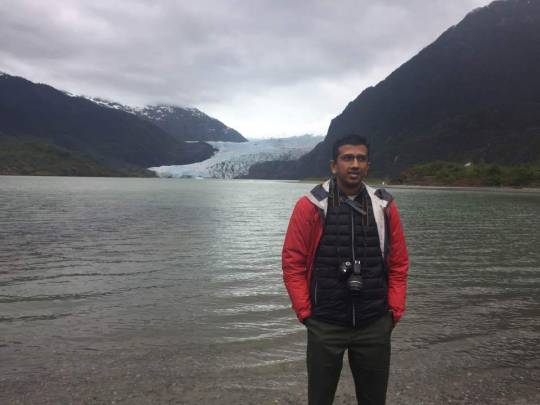#solar energy-driven miniature train
Text
Atomic Layer Deposition (ALD) Equipment Market: Trends, Growth, and Opportunities
The atomic layer deposition (ALD) equipment market is expected to grow significantly over the forecast period, driven by the increasing demand for high-speed, reliable connections in data centers and telecommunications networks. The market is expected to reach USD 6.2 billion by 2028, growing at a CAGR of 10.0% during the forecast period.
Key Drivers and Restraints
Driver: Rising Number of 3D NAND SSDs
The growing trend of miniaturization in electronic devices, coupled with advancements such as 3D NAND memory and FinFET-based transistor devices, has generated a heightened demand for the precise deposition of conformal thin films. Therefore, ALD plays a crucial role in the miniaturization of electronic devices as it enables the deposition of materials with exceptional conformality even at temperatures around 400°C. Moreover, ALD provides a valuable means to achieve high-quality thin films, essential for optimizing the performance and efficiency of these cutting-edge technologies. Therefore, the increasing number of 3D NAND SSDs is expected to drive the market growth for ALD equipment.
Download PDF Brochure:
https://www.marketsandmarkets.com/pdfdownloadNew.asp?id=96683066
Restraint: Shortage of Trained Workforce
The increasing demand for semiconductor devices from many end user industries, such as consumer electronics and automotive, has created several opportunities for the market players. However, the shortage of skilled technicians for such complex processes has not enabled the market players to utilize these opportunities to the fullest. So, the need for highly skilled workers to carry out these complicated tasks is a big problem that may restrain ALD equipment market growth.
Market Trends and Insights
Rising Technical Challenges and Process Complexities
Manufacturing semiconductors demands an extremely clean environment and equipment. Even a tiny speck of dust can disrupt the process and lead to significant financial losses. If there are manufacturing mistakes that cause supply delays, it can result in more losses and even canceled orders. Common problems in semiconductor manufacturing involve issues with the materials, mechanical strength, and the chips. Therefore, the increasing technical difficulties and process complexities in semiconductor manufacturing may impede the market growth of ALD equipment.
Escalating Need for Photovoltaic Systems
Photovoltaics are integrated into solar cells; the growing demand for solar cells contributes to the growing deployment of photovoltaics, which is expected to drive the market growth for ALD equipment. ALD films are also used in solar cells as surface passivation layers, buffer layers, window layers, absorber layers, and hole/electron contact, which can further drive the market growth of ALD equipment. Moreover, the health and environmental advantages of adopting photovoltaic power are particularly significant in densely populated areas heavily reliant on coal power, in contrast to sparsely populated regions abundant in clean hydropower or wind energy. Consequently, the surging demand for photovoltaics has led to an increased deployment of ALD equipment, which is expected to drive the market growth of ALD equipment in the future.
Market Analysis and Forecast
The ALD equipment market is expected to grow at the highest CAGR in the Asia Pacific region during the forecast period. The Asia Pacific region has witnessed significant growth in data center infrastructure due to the rising demand for cloud computing, digital services, and e-commerce. With the deployment of 5G networks in the Asia Pacific countries, high-speed, low-latency communication links are essential.
Competitive Landscape
The prominent players in the ALD equipment market are ASM International N.V. (Netherlands), Tokyo Electron Limited. (Japan), Applied Materials, Inc. (US), LAM RESEARCH CORPORATION. (US), and Veeco Instruments Inc. (US). These companies perform organic and inorganic growth strategies such as product launches, partnerships and acquisitions, to expand themselves globally by providing new and advanced ALD equipment solutions.
0 notes
Text
"Unveiling the Mystery: Why Has the Miniature Train Service at Veli Been Suspended for Three Weeks?"
The toy train service at Veli Tourist Village has been halted for the third consecutive week due to technical issues, which has disappointed the many tourists who visit the village.
The country’s first solar energy-driven miniature train, which was launched in 2020, was a major attraction for tourists who traveled to Veli, along with the village’s boat service. The suspension of the train service…

View On WordPress
0 notes
Text
"Unveiling the Mystery: Why Has the Miniature Train Service at Veli Been Suspended for Three Weeks?"
The toy train service at Veli Tourist Village has been halted for the third consecutive week due to technical issues, which has disappointed the many tourists who visit the village.
The country’s first solar energy-driven miniature train, which was launched in 2020, was a major attraction for tourists who traveled to Veli, along with the village’s boat service. The suspension of the train service…

View On WordPress
0 notes
Text
"Unveiling the Mystery: Why Has the Miniature Train Service at Veli Been Suspended for Three Weeks?"
The toy train service at Veli Tourist Village has been halted for the third consecutive week due to technical issues, which has disappointed the many tourists who visit the village.
The country’s first solar energy-driven miniature train, which was launched in 2020, was a major attraction for tourists who traveled to Veli, along with the village’s boat service. The suspension of the train service…

View On WordPress
0 notes
Photo

India’s First Solar-Powered Miniature Train Launched In Kerala The miniature rail has all the features of a fully- equipped rail system. Thiruvananthapuram: A solar energy-driven miniature train, billed as the country's first of its kind, was inaugurated at the Veli Tourist Village in Thiruvananthapuram by Kerala Chief Minister Pinarayi Vijayan on Monday.
0 notes
Photo

India’s First Solar-Powered Miniature Train Launched In Kerala The miniature rail has all of the options of a fully- outfitted rail system. Thiruvananthapuram: A photo voltaic energy-driven miniature practice, billed because the nation's first of its sort, was inaugurated on the Veli Tourist Village in Thiruvananthapuram by Kerala Chief Minister Pinarayi Vijayan on Monday.
0 notes
Photo

India’s First Solar-Powered Miniature Train Launched In Kerala The miniature rail has all the features of a fully- equipped rail system. Thiruvananthapuram: A solar energy-driven miniature train, billed as the country's first of its kind, was inaugurated at the Veli Tourist Village in Thiruvananthapuram by Kerala Chief Minister Pinarayi Vijayan on Monday.
0 notes
Text
Looking 50 Years in the Future with NASA Earth Scientists
In the 50 years since the first Earth Day, the view from space has revolutionized our understanding of Earth’s interconnected atmosphere, oceans, freshwater, ice, land, ecosystems and climate that have helped find solutions to environmental challenges.
If NASA’s Earth science has changed this much in 50 years, what will it look like in 50 more years?
We asked some researchers what they thought. Here are their answers, in their own words.

Mahta Moghaddam is a professor of electrical and computer engineering at the University of Southern California. She’s building a system that helps sensors sync their measurements.
I am interested in creating new ways to observe the Earth. In particular, my team and I are building and expanding a system that will allow scientists to better study soil moisture. Soil moisture plays a vital role in the water and energy cycle and drives climate and weather patterns. When soil is wet and there is enough solar radiation, water can evaporate and form clouds, which precipitate back to Earth. Soil also feeds us – it nourishes our crops and sustains life on Earth. It’s one of the foundations of life! We need to characterize and study soil in order to feed billions of people now and in the future.

Our novel tool aims to observe changes in soil moisture using sensors that talk to each other and make decisions in real time. For instance, if one sensor in a crop field notes that soil is dry in a plot, it could corroborate it with other sensors in the area and then notify a resource manager or decision maker that an area needs water. Or if a sensor in another location senses that soil moisture is changing quickly due to rain or freeze/thaw activity, it could send a command to launch a drone or even to notify satellites to start observing a larger region. We live in one big, connected world, and can and will use many different scales of observations – local to global – from point-scale in-situ sensors to the scales that can be covered by drones, airplanes, and satellites. In just a few years from now, we might see much more vastly automated systems, with some touching not only Earth observations, but other parts of our lives, like drone deliveries of medical tests and supplies.

Odele Coddington is a scientist at the Laboratory for Atmospheric and Space Physics at the University of Colorado, Boulder. She’s building an instrument to measure how much solar energy Earth reflects back into space.
My research is focused on the Earth system response to the Sun’s energy. I spend half of my time thinking about the amount and variability of the Sun’s energy, also known as the solar irradiance. I’m particularly interested in the solar spectral irradiance, which is the study of the individual wavelengths of the Sun’s energy, like infrared and ultraviolet. On a bright, clear day, we feel the Sun’s warmth because the visible and infrared radiation penetrate Earth’s atmosphere to reach the surface. Without the Sun, we would not be able to survive. Although we’ve been monitoring solar irradiance for over 40 years, there is still much to learn about the Sun’s variability. Continuing to measure the solar irradiance 50 years from now will be as important as it is today.

I spend the other half of my time thinking about the many processes driven by the Sun’s energy both within the atmosphere and at the surface. I’m excited to build an instrument that will measure the integrated signal of these processes in the reflected solar and the emitted thermal radiation. This is my first foray into designing instrumentation and it has been so invigorating scientifically. My team is developing advanced technology that will measure Earth’s outgoing radiation at high spatial resolution and accuracy. Our instrument will be small from the onset, as opposed to reducing the size and mass of existing technology. In the future, a constellation of these instruments, launched on miniaturized spacecraft that are more flexible to implement in space, will give us more eyes in the sky for a better understanding of how processes such as clouds, wildfires and ice sheet melting, for instance, alter Earth’s outgoing energy.

Sujay Kumar is a research physical scientist at NASA’s Goddard Space Flight Center. He works on the Land Information System.
Broadly, I study the water cycle, and specifically the variability of its components. I lead the development of a modeling system called the Land Information System that isolates the land and tries to understand all the processes that move water through the landscape. We have conceptual models of land surface processes, and then we try to constrain them with satellite data to improve our understanding. The outputs are used for weather and climate modeling, water management, agricultural management and some hazard applications.

I think non-traditional and distributed platforms will become more the norm in the future. So that could be things like CubeSats and small sats that are relatively cheaper and quicker than large satellites in terms of how much time it takes to design and launch. One of the advantages is that because they are distributed, you’re not relying on a single satellite and there will be more coverage. I also think we’ll be using data from other “signals of opportunity” such as mobile phones and crowd-sourced platforms. People have figured out ways to, for example, retrieve Earth science measurements from GPS signals.
I feel like in the future we will be designing our sensors and satellites to be adaptive in terms of what the observational needs on the ground are. Say a fire or flood happens, then we will tell the satellite to look over there more intensely, more frequently so that we can benefit. Big data is a buzzword, but it’s becoming a reality. We are going to have a new mission call NISAR that’s going to collect so much data that we really have to rethink how traditional modeling systems will work. The analogy I think of is the development of a self-driving car, which is purely data driven, using tons and tons of data to train the model that drives the car. We could possibly see similar things in Earth science.
Hear from more NASA scientists on what they think the future will bring for Earth science:
youtube
Make sure to follow us on Tumblr for your regular dose of space: http://nasa.tumblr.com.
#EarthDayAtHome#Earth Day#NASA#Earth#earth science#climate#climate change#fire#ice#snow#weather#geography#future#science#space#satellite images
1K notes
·
View notes
Text
Don’t Miss AR’s Amazing Opportunities
Augmented reality (AR) is a new industry growing at an exponential rate, loaded with opportunities for job creation. It offers a playground for entrepreneurs who want to use the certainty of Hard Trends to their advantage.
What’s most exciting about AR is that it is much easier to develop than virtual reality (VR), which requires a lot of programming and photo-realistic graphics in order to create a fully immersive virtual world.
AR takes less time and money to develop. Data is overlaid onto a live view of something, and users can multitask, allowing them to work while simultaneously accessing important information.
Both AR and VR have a bright future, but AR represents a much more dynamic world of opportunity. For example, I use an AR app that allows me to hold my smartphone up to any mountain, and the app will tell me the height of the mountain, the length of the trails, and other useful data that can help me determine where I might want to hike, climb or bike on vacation.
AR can also engage tourists who are in a new city for the first time. When you’re on a street in New York, you can tell an app what type of shoes you’re looking for, and all you have to do is hold your smartphone up and pan around to see if any nearby stores have what you want.
Soon we’ll be wearing AR glasses that are connected via Bluetooth to an AR app that will allow keynote speakers like myself to see the people we’re talking to, but also see their names, and by moving our fingers along the earpiece of the glasses, we’ll switch from no data to full data.
The Augmented Reality Job Market
We are in the beginning stages of a burgeoning AR market. I would highly recommend entering the world of AR professionally sooner than later. The wide-scale application of AR is only limited by our imaginations, and early developers in the field have barely scratched the surface of what is possible.
Given the wide range of industries that will benefit from AR, I predict that in the next few years we will see a multitude of usages, especially when AR glasses hit the market. Likewise, the glasses themselves will be more aesthetically pleasing thanks to the growth of miniaturization. Prescription AR glasses will be made available for those who need them, changing the usage dynamic from smartphone apps to wearables.
If you are considering a career in AR, it’s important to think about the ideal industry that would benefit from it, such as sales, service, maintenance and repair, factories, retail stores, and real estate offices. There’s a market for it in the trades as well, as AR glasses can be used to help people train quickly to become tradespeople to keep up with growing demand.
Within five years, we will see high-fashion AR glasses worn by many people. Data will be more frequently overlaid on our surrounding environment, and video media will be included. It is already possible to 3-D print a 4K camera that is the size of a fly’s eye, and with advances in solar charging, getting energy from ambient light will help us avoid the concern of charging AR glasses.
The Positives and the Negatives
With every new industry there are positives and negatives. In augmented reality, the greatest positive is quite clear: increasing humankind’s ability to make better decisions faster.
However, there is always a downside that we must look to solve before it occurs. The most obvious risk is that you might be paying more attention to the data than to the visual reality and walk into danger. When it comes to using digital technology, there is always a time to unplug. The concept of misinformation also exists, where the data overlaying your environment could be hacked and also put you in danger. Always remember to anticipate risks and think critically.
The future is bright for augmented reality for entrepreneurs and consumers. Ultimately, the industry will develop practical uses much faster than in the world of virtual reality. Virtual reality business applications will find many great niche markets, but augmented reality can be used by anyone anywhere due to the user’s ability to multitask.
The best thing about augmented reality is that you can use it while still interacting with the real world, which is very powerful. It does not encourage us to close ourselves off from our physical existence; it allows us to see insightful information in real time. It will give us a new way to discover the hidden facts that bring the things in our world to life.
We’re only at the base of the mountain of change, and the time to start your climb upward is now!
Technology-driven change is accelerating at an exponential rate, but moving fast in the wrong direction will only get you into trouble faster! Reacting to problems and digital disruptions, no matter how agile you and your organization are, is no longer good enough. If you don’t already have a copy of my latest bestselling book The Anticipatory Organization, click here to get your copy now!
vimeo
Don’t Miss AR’s Amazing Opportunities was originally published on Shenzhen Blog
0 notes